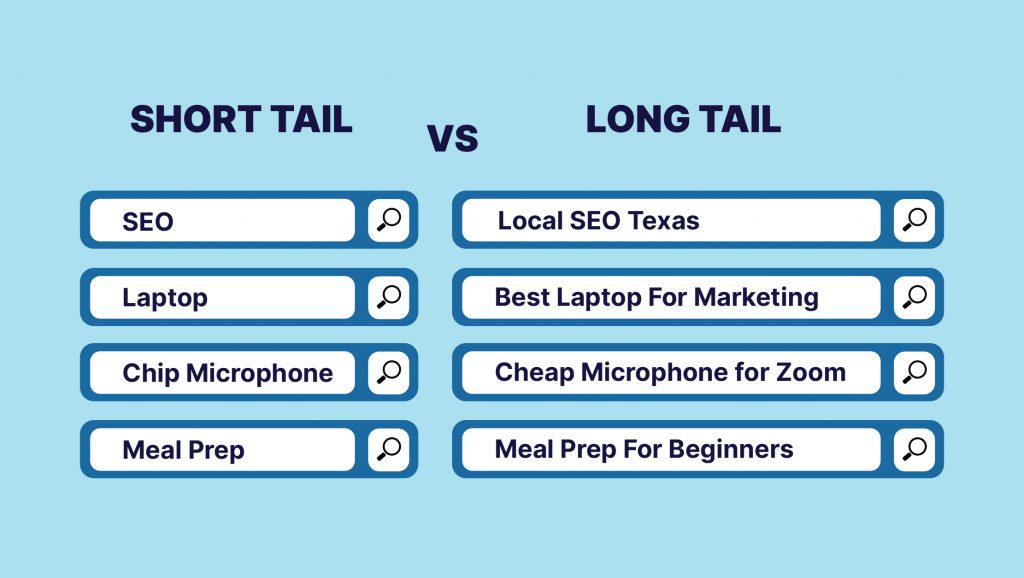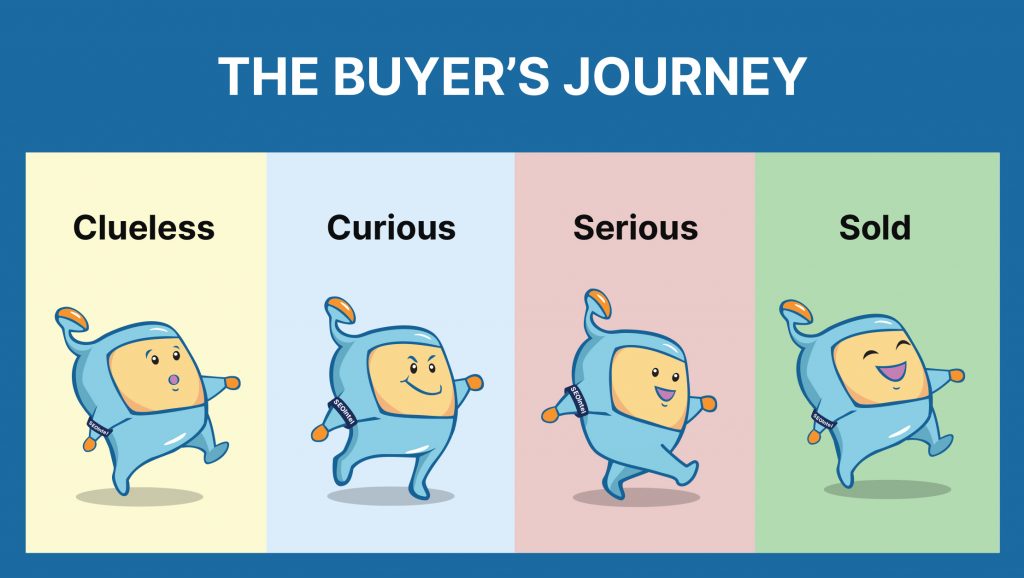
Nearly all content and digital marketers are familiar with the use and importance of keywords. However, long-tail keywords are a less understood and often underused tool that can skyrocket the success of any SEO strategy when appropriately utilized. Here is what companies and brands ready to optimize their content to maximize growth need to know about long-tail keywords.

At first glance, most marketers assume that “long-tail” refers to the length of a keyword phrase or sequence. However, while most longer phrases qualify as a long-tail keyword, the term does not only refer to the length of a keyword. Essentially, long-tail keywords are those that are found in the long tail of the search distribution graph.
The keywords located in the long-tail region of a distribution graph are defined by their low search volume. Because of this, it is much easier to sustain a competitive ranking for a specific topic or niche.

Short tail keywords are attractive because of their massive search volume. With so many people using these terms to search for the content they need, many marketers find themselves quickly attracted to these words and phrases. However, because the search volume is so high, the competition to rank higher is fierce.
For this reason, marketers looking to diversify their content strategy and maximize results incorporate long-tail keywords into their work. By choosing lower volume keywords, they can have more success with a competitive search ranking. Since organic search leads to more traffic and conversions than paid search marketing, this is a strategy that nearly all marketers can benefit from.

Unfortunately, many marketers and companies fall into the trap of focusing too much on paid search engine marketing. However, the truth is that SEO does a better job of bringing the right kinds of visitors to a site – and they don’t even have to pay for it (besides the writing of their own content). This is great news for new businesses and those with a smaller marketing budget.
There are two primary ways that this strategy can help companies achieve growth and reach their goals. The first is by creating better search rankings. When companies utilize long-tail keywords in their content, they give themselves a better chance of showing up closer to the top of a search page.
The second way that long-tail keywords can help companies increase their traffic and conversions is through more specific searches. Although long-tail keywords don’t have to be lengthy, they can bring better quality leads to websites and web pages when they are more specific. In a sense, they act as a form of targeting.

Finding long-tail keywords is simpler than it may seem. Ultimately, those looking for the right keywords want to approach this task with the goal of driving leads and web traffic. There are many different ways that long-tail keywords can be found, and here a few to help those trying to get started.
When using Google and other search platforms, users can scroll to the bottom of the search page to learn more about the related searches. These are suggestions made by the search engine to show you what other terms you can search for to help you find the right result. Marketers can use these terms as inspiration for their long-tail keywords.
Only using one keyword tool every time they conduct research will quickly realize they are missing out on an abundance of keyword variations. Here are a few to try:
Google Suggest is an excellent source of long-tail keyword variations. Those wondering what Google Suggest is, have already seen it a thousand or more times. When users begin to type their search into the search bar, Google and other search engines will begin to populate the rest of the phrase with suggestions. These suggestions will typically give a good idea of what others are searching for in relation to a certain keyword or phrase.
Those looking for long-tail keywords should not forget to take a look in their own backyard. Mining through GSC will show many, if not all, of the keyword phrases that deliver visitors to a website or webpage. Digging through these keywords will provide many options regarding relative and effective long-tail keywords.
Similarly, those running PPC campaigns through AdWords can use the Search Query Report in the same way. This report shows the search queries that people used before clicking on an advertisement. It makes it much easier to see which queries drive traffic and conversions, which is great for tailoring SEO to specific goals.
Q&A websites can surprisingly be a fantastic source for long-tail keyword suggestions. While combing through one of the sites, it helps to pay attention to the words that are frequently used. These repeated words and phrases show what people may be looking for to find the information that they need.
When referring to Q&A websites, give these a try:
Incorporating Long-Tail Keywords Into Content
Finding great keywords if half the battle, while integrating them into posts and content is the other half. Keyword optimization is essential for any business – it is not enough to try and stuff as many phrases into a post. Long-tail keywords need to be integrated into relevant, high-quality content in order to see the best results.
When integrating long-tail keywords, there are a few steps to take to make sure that your content is optimized and aligns with the goals of a company, business, or brand. Keeping these four steps in mind helps to ensure that marketers are making the most out of their strategy.

Like any other business function, it is crucial to set goals for content marketing objectives. It is important to consider what the ultimate goal is and how it should be achieved. To ensure that content marketers are pursuing goals that create user-friendly content that ranks higher, they should consider these goals:

To expertly match a user’s intent, it is essential to understand the people who search for a specific product or service. To do this, marketers and companies can create buyer personas based on the characteristics of their target audiences. However, without a clear understanding of what the buyer personas look like, any form of strategy is just a best guess.

It is important to be selective when choosing long-tail keywords. Long-tail variations with more words will typically have lower search volumes; however, their conversion rates are usually much higher. Using the tools listed above can help to gain a better understanding of the keywords that can help to increase a website or webpage’s search rank.

The content a website produces should be valuable to visitors by answering their questions or solving their problems. With this in mind, it is important to remember that keywords play an essential role in SEO, but they should ultimately take a backseat to creating high-quality content. With a significant amount of keyword research, it should not be too difficult to match the content to the user’s intent with high-quality useful information.